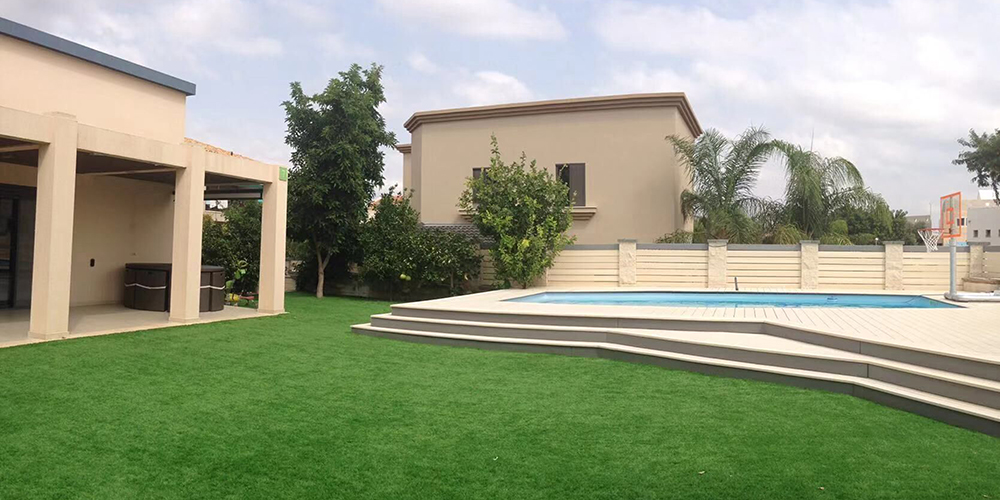Investing in fake grass is smart. Installing artificial turf often increases your property’s value.
Using the best synthetic grass and installing it properly, artificial turf can be as long as 8-10 years.
You’ll also have a low-maintenance garden that the whole family and their pets can enjoy year-round. Choosing a good artificial turf involves more than meets the eye. Choose a turf that looks well and performs well. “Buy low, buy twice” is true of artificial turf.
Aesthetically beautiful turf isn’t always functional. Many factors contribute to high-quality artificial grass. Today’s topic focuses on fiber material and why it affects an artificial lawn’s strength, resilience, and longevity. After reading it, you may have some ideas on choosing your best synthetic grass.
Let’s start with plastic artificial fiber varieties.
What Makes Synthetic Grass Fibers?
Plastic makes synthetic fibers. The artificial grass factories use polyethylene, nylon, and polypropylene in making synthetic turf fibers. Let’s examine each plastic.
Polyethylene
Polyethylene is a widely used plastic found anywhere in the world. Similarly, it is the material of choice for the artificial grass market. Compared to polypropylene, it is more expensive, whereas compared to nylon, this is less expensive.
It strikes a nice balance between suppleness and toughness. Softer fibers are typically weaker than their harder counterparts. However, the more robust the fiber, the rougher it will be.
If you’re looking for a material that can do it all, go no further than polyethylene, which manages to be both flexible and durable. Due to this, it is a preferred option for your best synthetic grass in many settings.

Nylon (polyamide)
Nylon was the first material utilized to make man-made fibers. Nylon’s great strength and exceptional resilience made it the clear choice for withstanding a sports field’s rigorous treatment.
Because of its high durability, abrasion resistance, and resilience, nylon is also the fiber of choice for most commercial carpets. Toothbrush bristles, seatbelt webbing, parachutists’ slack, and fishing line are all products of this versatile material.
Nylon, on the other hand, is the most expensive plastic, which drives up the price of a new artificial lawn.
For low-traffic locations, the added cost is not worthwhile. However, if the turf is subjected to heavy foot activity, nylon’s longer lifespan makes it the most cost-effective material. It has a gritty texture. Therefore, it is not as soft as polyethylene or polypropylene but is quite resistant to tearing and puncturing.
Polypropylene
Polypropylene is one of the most widely produced plastics worldwide. Because of its high strength and resilience, it is well suited for residential lawns. The surface is naturally glossy and polished, adding to its attractiveness.
Conclusion
Ultimately, the function of your synthetic grass will determine which plastic fiber is ideal.
Although nylon is the best-performing fiber, it would be wasteful to use it for a lawn that is mainly for aesthetic purposes and will not be subjected to heavy foot activity. It would not be worthwhile to spend the extra money. Instead, consider a polypropylene or polyethylene lawn.
A product made from a blend of nylon and polyethylene is the best option if you’re unsure what to get. Fiber content is essential, but it’s not the only factor to think about when shopping for fake grass.
We hope you’ve learned a thing or two on how to choose your best synthetic grass about the various fibers used in fake grass production from this article, and if you have any questions, please feel free to post them in the section below, and we’ll do our best to respond.




